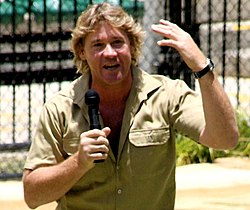| Irwin's turtle | |
|---|---|
 | |
| Scientific classification | |
| Kingdom: | Animalia |
| Phylum: | Chordata |
| Class: | Reptilia |
| Order: | Testudines |
| Suborder: | Pleurodira |
| Family: | Chelidae |
| Genus: | Elseya |
| Subgenus: | Pelocomastes |
| Species: | E. irwini |
| Binomial name | |
| Elseya irwini | |
Irwin's turtle (Elseya irwini) is a rare species of freshwater turtle in the family Chelidae. The species is endemic to Australia, originating from the lower region of the Burdekin River area in northern Queensland, and was named after the late conservationist and television personality Steve Irwin.

